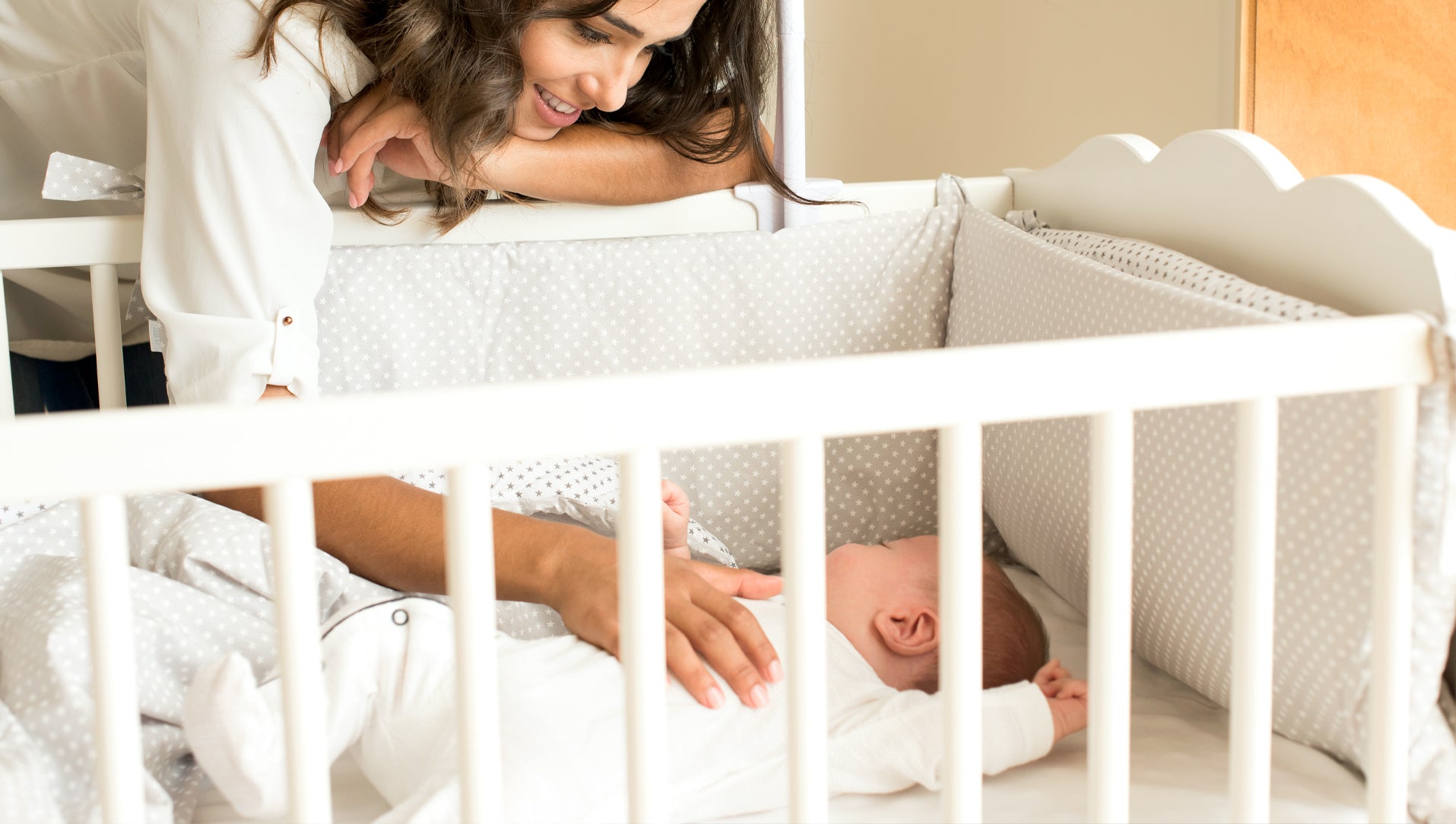What's the safest place for baby to sleep?
•Posted on November 10 2021

"Where should my baby sleep" might sometimes seem like too luxurious of a question when getting your baby to sleep at all might seem like a faraway dream. But the question of where and how your baby should sleep is a very important one, because the answer could potentially be life-saving.
Since babies have little control over their movements, a baby placed in the wrong position or with too many hazardous items around them could be at risk of suffocation, choking, or SIDS (Sudden Infant Death Syndrome). Although it is not entirely clear what causes SIDS, researchers have discovered that there are certain precautions parents can take to reduce the risk of SIDS.
Babies are most at risk of SIDS when they are a year old or younger, but even more so between the ages of one to four months old. To help prevents SIDS as well as other sleep-related deaths, experts suggest the following:
Placing the baby on their back to sleep - this might be the most important prevention a parent can do. A baby placed on their side or stomach might have more trouble breathing than a baby placed on his or her back.
Using a firm crib mattress - a soft crib mattress invites too much risk that the baby might suffocate in the soft folds of a squishy mattress. The sheet on the mattress should be fitted tight to the mattress to avoid any folds that might interfere with your baby's airways.
Keeping the crib clear of unnecessary items - avoid placing pillows, toys, or blankets in the baby's crib so that there is no risk of anything blocking the baby's airways. Make sure there are no dangling curtain cords or electrical wires nearby that could get tangled up with your baby.
Swaddling - swaddling is an effective way to help infants go to sleep because a properly swaddled baby feels warm and secure. It may even help prevent your baby from throwing his arms up and startling himself in his sleep, or scratching himself accidentally. However, if your baby learns how to roll over, swaddling should no longer be used. Swaddling is only safe if the baby is placed on his or her back. If the baby is able to roll over in their swaddle, this is no longer a safe practice.
Using a pacifier - there is some evidence that using a pacifier could prevent SIDS. Make sure that the pacifier is not on a necklace and that it has no straps attached. However, if you are breastfeeding, it is not recommended that you use a pacifier before your baby is three or four weeks old. Give you and your baby time to settle in to a nursing routine before offering a pacifier, and never force one on your baby if they are not interested.
Sleeping in the same room - having your baby sleep in the same room as you can decrease their risk of SIDS, and give you ample opportunity to easily check in on them. However, it is important to note that babies should still sleep in their own crib or bassinet. Babies who sleep in the same room as their parents have reduced risk of SIDS, but babies who sleep in the same bed have increased risk. There are too many dangers in your bed… they could suffocate in the pillows or the blanket or the soft mattress, or you could even accidentally roll onto them in your sleep.
Temperature - do not overheat your baby. To keep your baby warm try a snug sleep sack or warm, snug clothes that don't require additional coverings. Make sure the room temperature is a comfortable one for your baby. If your baby is sweating or if their chest feels hot, they may be overheated.
Breastfeeding - breastfeeding for six months or longer has been shown to reduce the risk of SIDS
Before you get too nervous, keep in mind that SIDS is rare; only 35 in 100,000 babies develop SIDS. Having proper sleep safety guidelines in your home can help keep your baby snug and safe while they sleep.